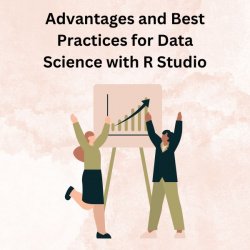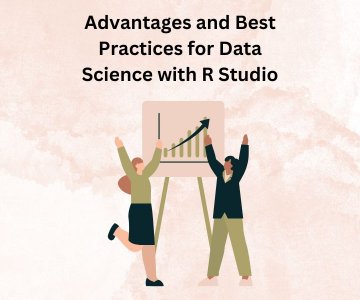What is Supervised Machine Learning?


What is Supervised Machine Learning? Supervised machine learning is a type of artificial intelligence (AI) which uses algorithms to predict outcomes based on labeled data. It involves teaching computers to make decisions by feeding it training data, which contains labels and features, and then letting the computer learn from the data provided.
Prediction is an important element when it comes to supervised machine learning. This type of AI uses training data to “train” a model to recognize patterns and then predict future outcomes based on those patterns. It can also be used for classification tasks such as sorting emails into categories or for regression tasks such as predicting stock prices.
There are various algorithms which are used in supervised machine learning, including Naive Bayes, Decision Trees, Support Vector Machines (SVM), and Random Forests. These algorithms are used to develop computer models utilizing the training data provided, with each algorithm having its own unique way of analyzing the data for predictions.
Labels or classes are an essential aspect of supervised machine learning because they tell the computer what each piece of information means. For example, if you’re teaching a computer how to recognize images of cats and dogs, you will have to label them as such since the computer has no way of knowing this information on its own. By labeling features with specific classes or labels, you are providing the computer with the necessary information it requires in order to make accurate predictions.
In order for supervised machine learning systems to produce accurate results, they require large amounts of training data that contains features or inputs as well as labels and classes that describe those features accurately. Data Science Training in Bangalore
Applications of Supervised Machine Learning
Are you curious about the applications of Supervised Machine Learning? Supervised Machine Learning is used to solve a variety of real-world problems, from classification to anomaly detection and more. In this blog section, we will explore the different applications of supervised machine learning and how they can be used effectively.
The most common application of supervised machine learning is classification. This involves analyzing a set of data and learning to distinguish between different classes or categories within that data set. Classification is usually done with algorithms such as K Nearest Neighbor (KNN), Support Vector Machines (SVM) and Deep Learning Networks (DLN). These algorithms can help you classify objects in an image, classify different types of customers, or even identify fraud in financial transactions.
Another key application of Supervised Machine Learning is regression. Regression algorithms are used when there is a need to predict certain values within a dataset. In essence, the algorithm uses existing data points to estimate values for new data points that may not be available in the existing dataset. Common regression algorithms include Linear Regression, Logistic Regression and Decision Trees.
Anomaly detection is also another important application of Supervised Machine Learning — it helps detect abnormalities or outliers in large datasets by identifying patterns or clusters in data that don’t fit the norm. Algorithms like Gaussian Mixture Models can be used for this purpose — it attempts to find distributions within the features within a dataset and then flags any instances which have anomalous behavior compared to the distributions.
Clustering is yet another application for supervised machine learning — it requires an algorithm which groups similar items together under one label or category.
Types of Supervised Learning Algorithms
Supervised machine learning is a type of artificial intelligence that uses algorithms to sift through data and learn from labeled examples. It takes in input from the user or a dataset, recognizes patterns in the data, and provides output predictions. When it comes to supervised learning algorithms, there are 2 main categories: classification algorithms and regression algorithms.
Classification Algorithms are used to predict discrete values such as labels or categories. Examples of classification algorithms include Decision Trees, Ensemble Methods, K Nearest Neighbors (KNN), Naive Bayes Classifier, and Support Vector Machines (SVMs).
Decision Trees are one of the most popular supervised machine learning algorithms because they allow you to produce highly accurate decisions with minimal computational requirements. They work by splitting data into groups based on attributes like size or color. Once the decision tree has been created, it can be used to classify future data points into the appropriate group.
Ensemble methods combine multiple base models to create more powerful overall models. By combining several prediction results together, they can often provide more precise predictions than any single base model can provide on its own. Examples of ensemble methods include Random Forests, Boosting, and Bagging. Data Science Course in Delhi
K Nearest Neighbors (KNN) is another popular classification algorithm that makes predictions based on what it knows about observations near each other in space or time. This means that when dealing with new observations KNN must compare them to all other observations in order to classify them correctly which requires a lot of computing power but also yields high accuracy levels rather quickly as compared to other methods.


Hi there, I found your web site by way of Google even as
searching for a comparable topic, your website got here up, it seems to be great.
I’ve bookmarked it in my google bookmarks.
Hello there, simply turned into aware of your blog through Google, and found that it is
really informative. I’m going to watch out for brussels.
I’ll appreciate for those who continue this in future.
A lot of other folks will be benefited out of your writing.
Cheers!